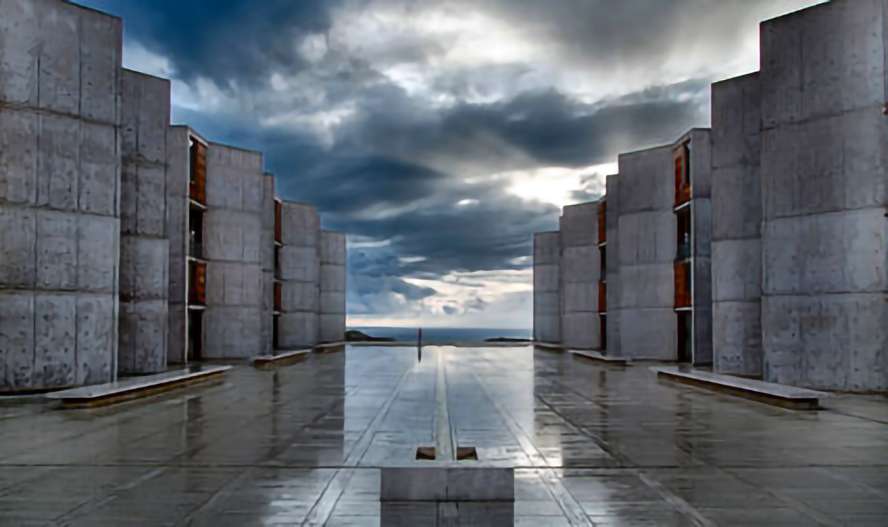SEVILLE / 31 March 2022.
In the previous issue we saw how the last CIAMs, held at the end of the 1950s, marked a paradigm shift in the way of understanding the relationship between buildings and human beings. In opposition to the mass-man of the Modern Movement, a user of machines for living, it began to be considered that it was necessary to value identity, diversity and multiplicity, placing the person at the centre of thought. With this new vision, the way of perceiving and conceiving spaces, buildings and environments slowly and gradually changed, as we will see below.
In order to understand the legibility of urban space and to better understand what a person perceives when walking through a city, the engineer and urban planner Kevin Lynch developed the concept of cognitive mapping in 1960; a hypothetical construct based on human behaviour and introspective accounts. In order to improve the understanding of public space, Lynch first realised environmental diagrams and information systems obtained through the experience of walking through them. His research and contributions were a starting point to begin to understand and unravel how a physical environment can have emotional consequences, positive or negative, on people.
In parallel to these urban reflections, Jonas Salk, discoverer of the polio vaccine, from a more poetic, aesthetic or phenomenological position or perception, realised the enormous importance of an adequate design of space for the creative process and for the flow of ideas, inspiration and knowledge. With this conviction, he commissioned Louis Kahn in 1959 to design the building for the Salk Institute for Biological Studies. The architect created in La Jolla (California) one of the main references of contemporary architecture, but above all, he built the first example of the relationship between neuroscience and architecture, as the building was designed with the aim of promoting the best conditions of intellectual and physical comfort, based on the functioning of the human brain.
At the end of the 1960s, the Scottish architect Ian L. McHarg published his well-known book Design with Nature (1969). According to the American historian Lewis Mumford, this publication laid the foundations for the development of a new, Adamic human civilisation to replace the existing one, which is in a process of accelerated pollution, degeneration and disintegration. McHarg, an urban planner, landscape architect and inspired ecologist, laid the foundations for environmental planning with a certain ecological determinism, the origin of what would later be called with the pleonasm ‘sustainable architecture’.
The book ends with a chapter entitled ‘The City: Health and Illness‘, which did not have the same significance as the other chapters. In it, McHarg asks whether health is just the absence of illness. He argues that health is a symptom of creativity and adaptation, while illness is an expression of destructive capacity and maladaptation. It is therefore necessary to identify where the environment of health – physical, mental and social – is located and where the environment of illness is located. If the health and disease zones in cities can be identified, it will be possible to associate the environmental agents that favour health and the risk factors that cause disease. From this intelligent approach, proposed more than fifty years ago, comes a fundamental action: mapping areas of health and disease in cities. This work has not been done and should have been done, especially given the existence of a network of Healthy Cities, sponsored by the WHO.
The interest in understanding the influence of space on the human being and knowing the reasons why a person feels well in a certain place, transcended from architecture to other disciplines such as medicine, nursing, sociology or psychology. The physician and sociologist Aaron Antonovsky, in his book Health, Stress and Coping (1979), proposes a new field of study called Salutogenesis, which focuses on the origin of health and the so-called assets for health. It is a discipline that is positioned as a complement to approaches that focus solely on resolving pathogenic or unhealthy aspects of places. That is, instead of analysing those environments that harm people, this new disciplinary field focuses on those aspects that can promote a healthier environment.
Antonovsky maintains that an environment or space must answer three basic questions to facilitate a person’s wellbeing. First, it must have manageability or the ability for the space to facilitate or manage resources that support the body’s resistance to disease. That is, the environment must provide the basic requirements to adequately maintain homeostasis: regulation of body temperature, hydration and other somatic issues. An example would be the Andalusian patios, which in summer provide shade and in winter favour cross ventilation, are energetically efficient and provide resources that help the human body and favour wellbeing in the different seasons.
The second factor is comprehensibility, or the possibility of understanding the environment through the cognitive schemes that one possesses. For this, it is necessary that the space has coherence and legibility, that is, that it allows the understanding of its forms as part of a specific cultural, historical or aesthetic context, in such a way that it is possible to perceive its structure well and to orient oneself within it. Returning to the example of the courtyards, it seems obvious that their formal configuration allows them to be recognised as easily understandable spaces that are part of the identity of a given territory.
The above two conditions, although necessary, are not sufficient to justify the introduction of certain measures or building typologies in the design and planning of buildings or cities. Because a courtyard can also fulfil these conditions… and nobody wants to live in or pass through it. In other words, a courtyard, in addition to meeting the above requirements, needs to be a good courtyard. A courtyard that excites, that makes sense and that brings meaning and value to the place where it is built.
For this reason, Antonovsky proposes a third condition, which is that space must possess meaningfulness or have a meaning, a sense recognisable by the people who perceive, use or inhabit it. Its importance lies in the capacity of the meaning of things, of the environment, of relationships, of life, in short, to strengthen people’s will to resist problems and contingencies. This makes it the most important resource. But it is also the most complex, subjective and difficult to achieve. Giving meaning to what is built is where the architectural project contributes its greatest value, because in the quality of the project lies the capacity of architecture to move and give meaning to spaces.
This intangible is what allowed Brunelleschi to beat his own model maker in the competition for the lantern of the Duomo in Florence. Because all lanterns serve to introduce light and anyone can make them – as the model-maker intended by also entering the competition – but they do not all mean the same thing. Only the one who was able to give the lantern a meaning recognisable to the Florentines won the competition.
——
Santiago Quesada García is Doctor of Architecture, Professor of the Department of Architectural Projects, Head Researcher of the Healthy Architecture & City group (TEP-965) and Principal Investigator of the projects ALZARQ of the Ministry of Science and Innovation and DETER of the Junta de Andalucía.
Post published in the IUACC Bulletin nº 131 of 31 March 2022
——
Image of the post:
Salk Institute for Biological Studies, San Diego (California, USA), Louis I. Kahn, 1965


